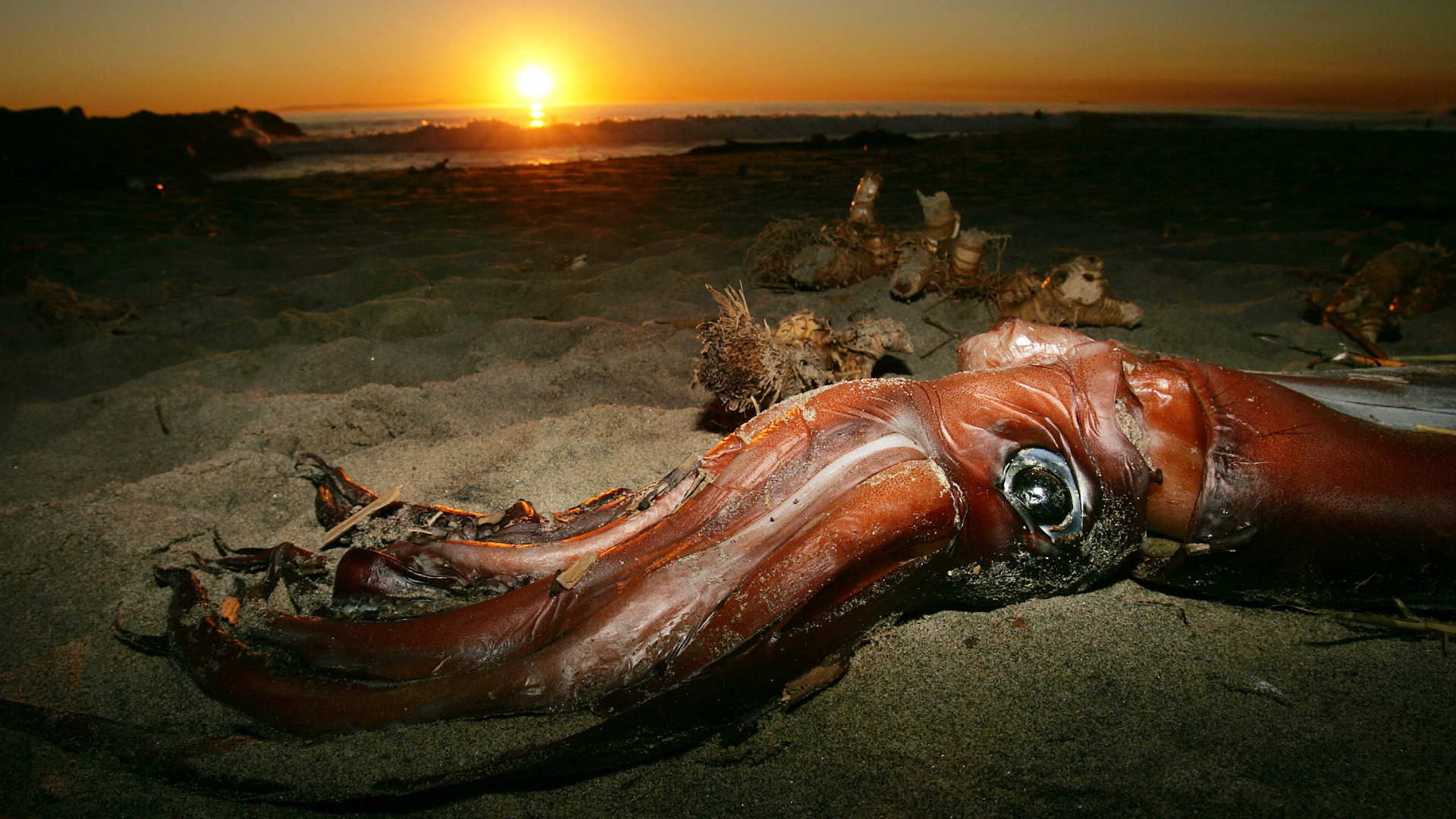What is the largest squid in the world?
There are two contenders for the world's largest squid, and both are giants.

Legends about gargantuan squid have existed for millennia, with photos confirming their existence nearly 150 years ago. But what is the largest squid in the world?
Depending on how you measure, there are two contenders. The giant squid (Architeuthis dux) is the longest squid, and the colossal squid (Mesonychoteuthis hamiltoni) is the heaviest.
The giant squid, found in every ocean, is estimated to reach up to about 40 to 45 feet (12 to 14 meters) long from the tip of its body to the tip of its tentacles and weigh about 600 pounds (270 kilograms), Heather Judkins, a cephalopod expert at the University of South Florida at St. Petersburg, told Live Science. There have been claimed sightings of giant squids up to about 66 feet long (20 m), but they have not been verified, according to Two Oceans Aquarium in Cape Town, South Africa.
The colossal squid, which lives in Antarctic waters but may venture as far north as New Zealand, is estimated to reach about 30 to 33 feet (9 to 10 m) long. However, what it lacks in total length compared with the giant squid, it makes up for in weight — it can reach about 1,000 pounds (450 kg), Judkins said. This likely makes the colossal squid the most massive invertebrate on Earth, according to ocean nonprofit Oceana.
Giant squid and colossal squid have the largest eyes of any living animal, and possibly the largest eyes that have ever existed in the animal kingdom, according to the Museum of New Zealand. They measure about 11 inches (27 centimeters) wide, about the size of a soccer ball, a 2012 study in the journal Current Biology noted.
Each colossal squid eye is also equipped with a light-emitting organ known as a photophore, the Museum of New Zealand said. Colossal squid use these photophores like headlights to see in the dark. (Giant squid eyes lack photophores, Judkins said.)
The colossal squid also has the largest beak of any squid, made of a material similar to what human fingernails are made of. The squid uses its beak to slice a meal into bite-size pieces before it enters the mouth, and a tooth-covered, tongue-like organ called the radula shreds food further once it's inside the beak.
Get the world’s most fascinating discoveries delivered straight to your inbox.
Related: See 15 crazy animal eyes

Both huge squid species eat fish and other squid. After they reach adulthood, the only regular predator they face is likely the sperm whale, according to Two Oceans Aquarium. Colossal squid might form as much as 77% of a sperm whale's diet, according to the Museum of New Zealand.
Because the ocean is so vast and the squid live so deep, these sea monsters are rarely seen, the Smithsonian noted. Although both the ancient Greek philosopher Aristotle and the ancient Roman scholar Pliny the Elder recounted details about huge squid, according to Two Oceans Aquarium, the first photo of such an enormous squid wasn't taken until 1874, when Rev. Moses Harvey of Newfoundland captured a picture of a dead giant squid from a fisherman who caught it by accident, the Smithsonian said.
Most of what scientists know about giant squid comes from remains discovered floating on the ocean surface, washed up on beaches or within sperm whale stomachs, a 2013 study in the journal Proceedings of the Royal Society B noted. The same holds true for colossal squid, according to the Museum of New Zealand.
Scientists did not manage to capture a photo of the adult giant squid in its natural habitat till 2004, and the first video footage of an adult giant squid in the wild was not taken until 2012, Britannica explained. Similarly, no one had ever seen an intact colossal squid until 2003, according to the Museum of New Zealand. An international expedition to Antarctica this December will attempt to find and film the colossal squid in the deep sea for the first time.
"The ability to see these animals in their natural habitat is amazing," Judkins said. "To get the opportunity to capture them with remotely operated floating camera systems is great. It's an excellent way to observe behaviors."


